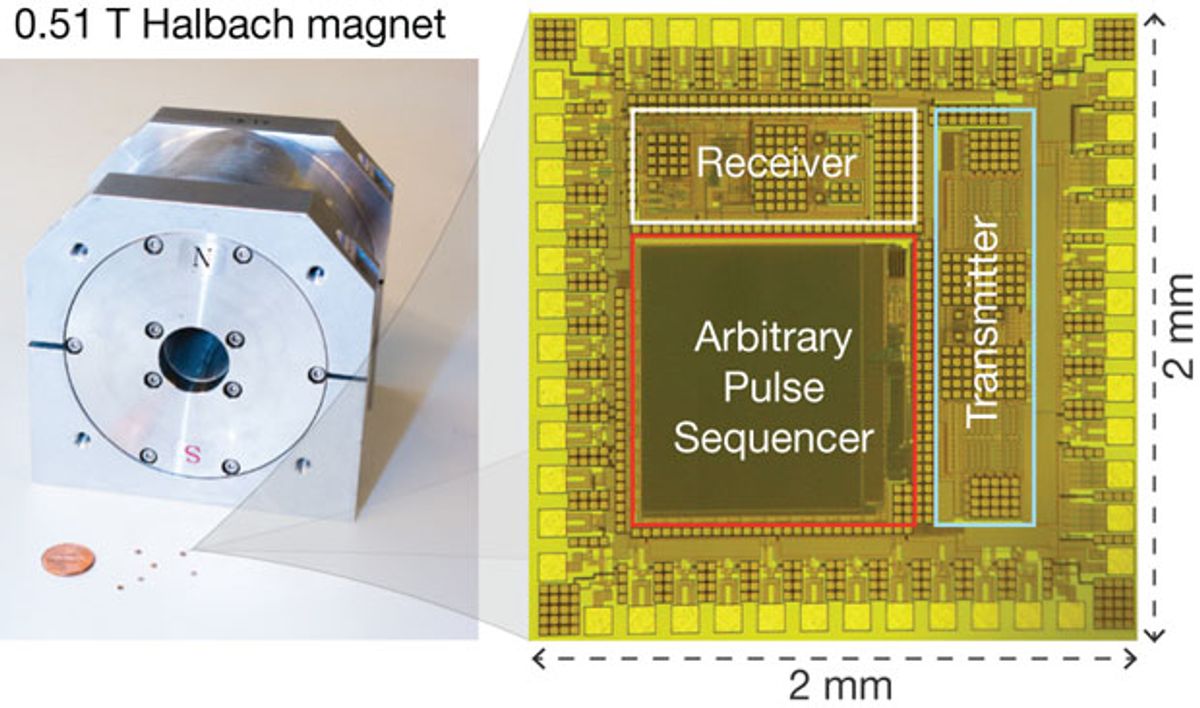Engineers at Harvard University have made a nuclear magnetic resonance (NMR) spectroscopy chip so small you can hardly see it. It fits on a 2mm-by-2mm silicon chip and is the smallest NMR system built yet. The chip could lead to an ultra-compact, affordable NMR machine for spotting bacteria or cancer proteins in a doctors office or for quality control in drug and chemical production lines.
NMR spectroscopy reveals the chemical structure of organic molecules and is a common tool for studying proteins, discovering drug candidates, and for process and quality control in the petroleum and petrochemical industries. The technique involves aligning the nuclear spin of atoms along a static magnetic field and then vibrating them with a radio-frequency signal. At certain resonance frequencies that depend on the nucleus, the spins flip back and forth, producing an RF signal.
Conventional NMR requires large, expensive superconducting magnets to analyze the structure of complex molecules like proteins or to create high-resolution magnetic resonance imaging (MRI) scans. But smaller, less powerful permanent magnets suffice for probing smaller molecules.
High-quality permanent magnets have been shrinking, allowing researchers to combine them with compact spectrometer electronics for sensitive, high-resolution NMR. For instance, a different group at Harvard Medical School has made a palm-fitting NMR device for detecting tuberculosis, and another that attaches to a smartphone to detect tumor markers.
Now, Harvard electrical engineering and applied physics professor Donhee Ham and his colleagues have drastically shrunk the size of the electronics even further, fitting the RF receiver, transmitter and other components on a tiny seed-sized chip. The chip is used with a fist-sized permanent magnet to perform NMR. They reported the results in this week's Proceedings of the National Academy of Sciences.
The team was able to eliminate extra hardware needed when miniature permanent magnets are used for NMR. The problem with small permanent magnets is that the magnetic field fluctuates with small temperature changes. Resolving that typically requires hardware for physical thermal regulation. Instead, the researchers used signal-processing computations to estimate this fluctuation and compensate for it, explained Ham in a press release.
Prachi Patel is a freelance journalist based in Pittsburgh. She writes about energy, biotechnology, materials science, nanotechnology, and computing.



